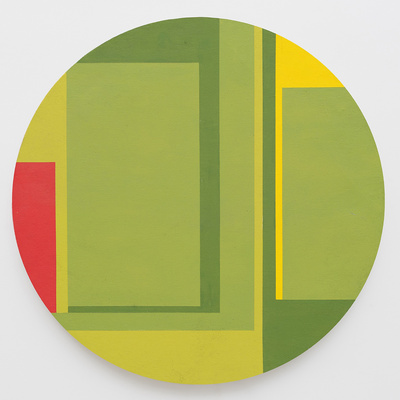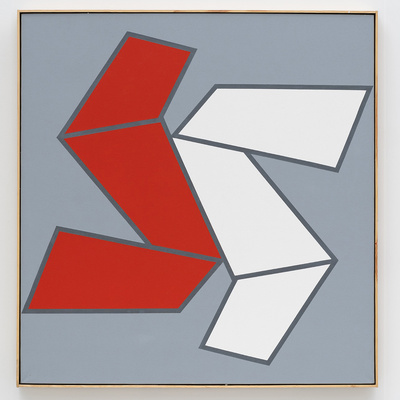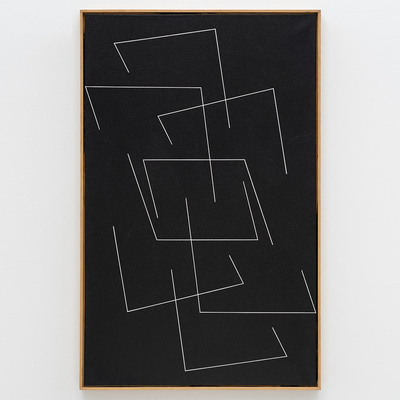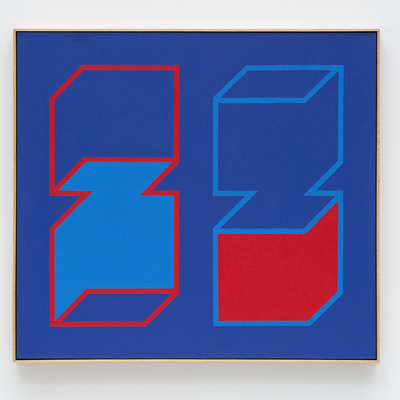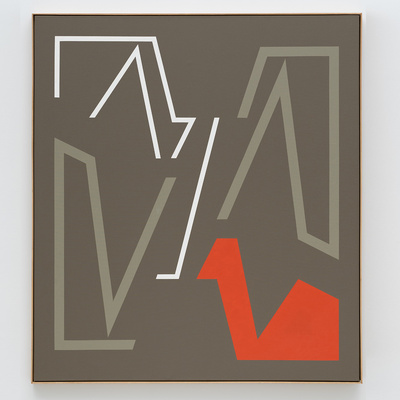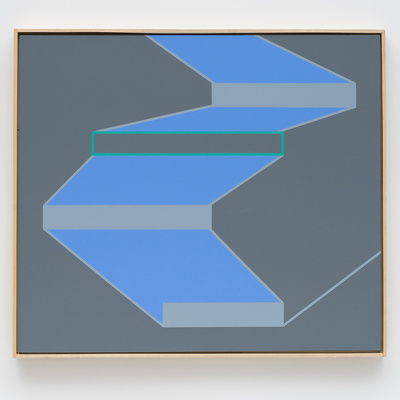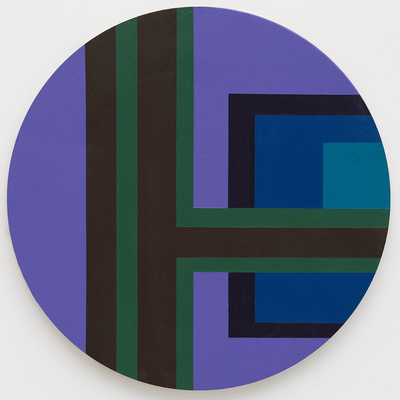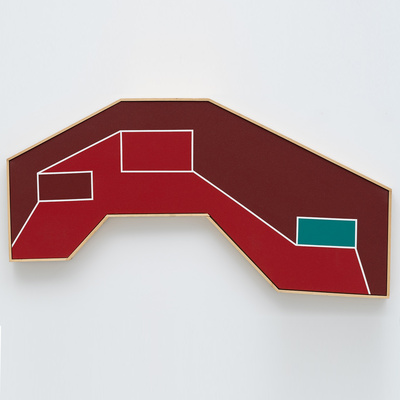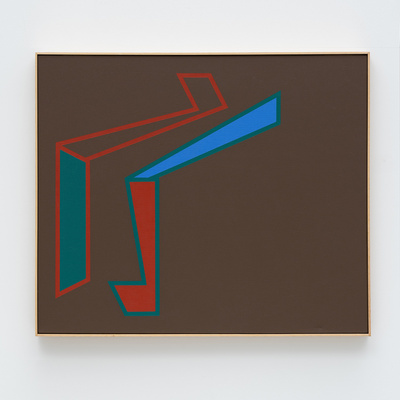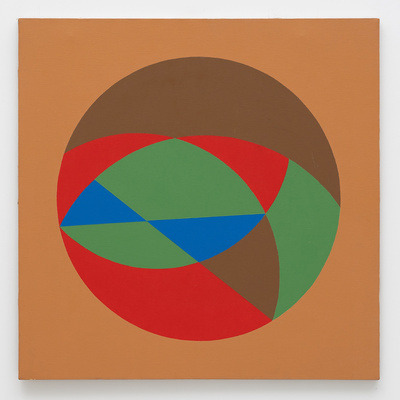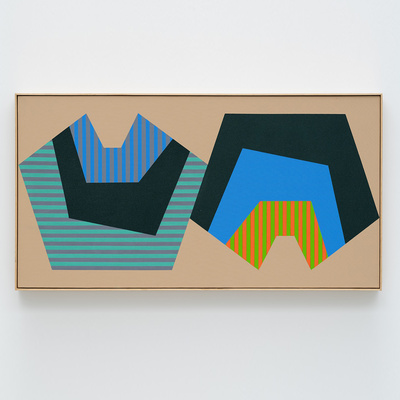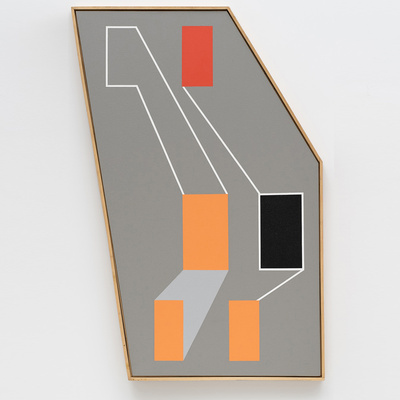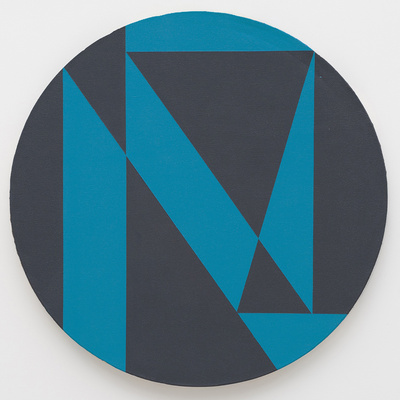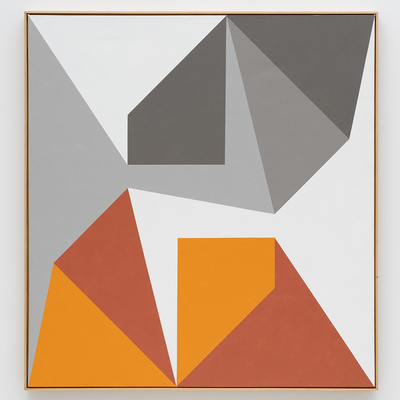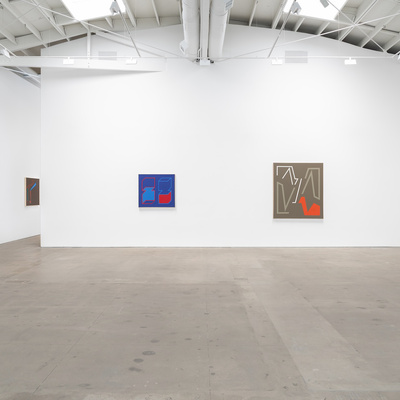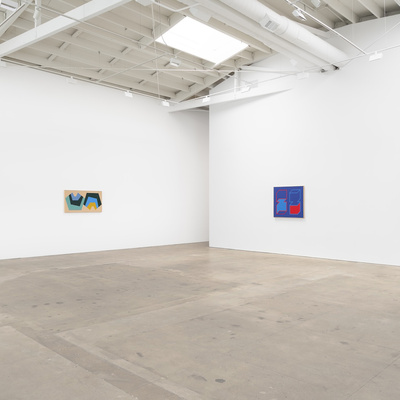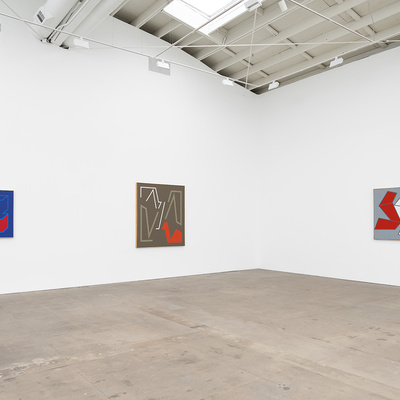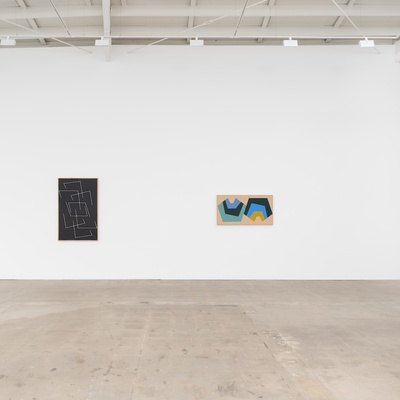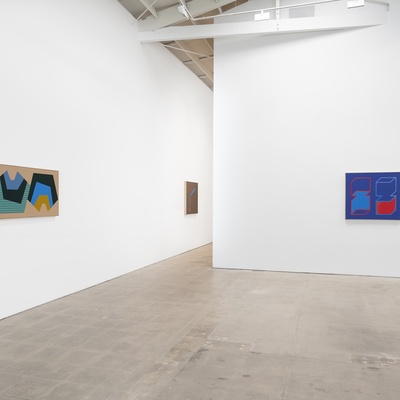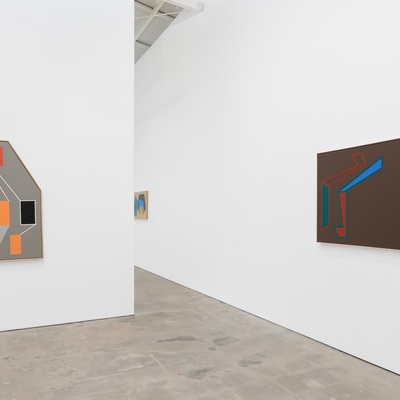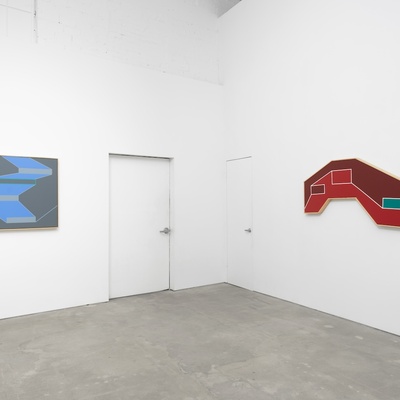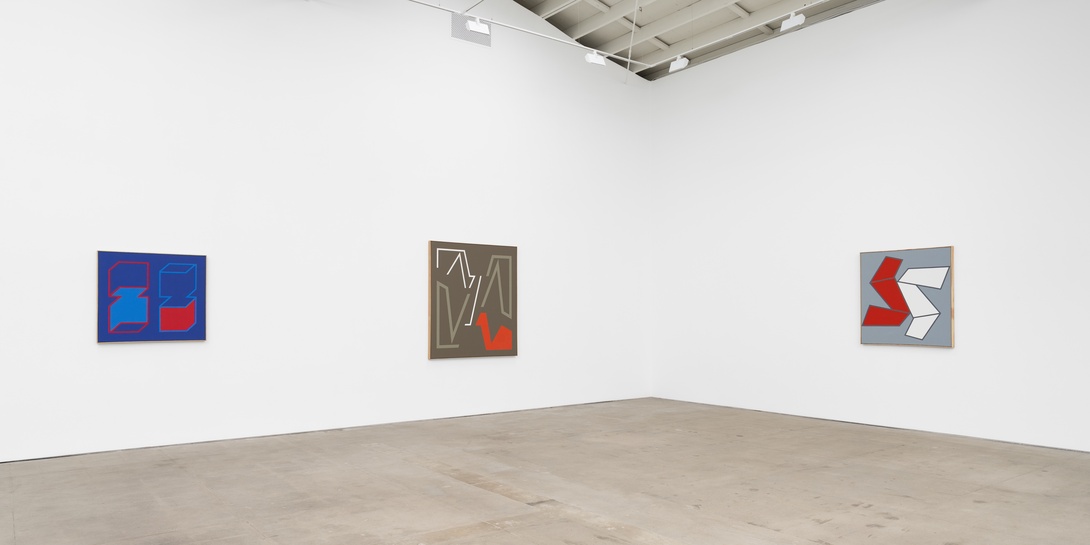
Leo Krikorian
“Leo Krikorian plays with the idea of tension interrupting harmony and chaos provoking the cosmos. Just when you think things are settling down, visual mayhem erupts. Shapes begin to soar and float. With Krikorian’s paintings, there is never really a quiet moment. This is analogous to the way improvisational jazz works.” — Robert Godfrey, 2005.
Babst Gallery is pleased to present Leo Krikorian, an exhibition of hard-edge acrylic paintings by Leo Krikorian (1922-2005). Krikorian enrolled at ArtCenter School of Los Angeles where he studied photography under Ansel Adams. From 1946 to 1948, he studied painting with Josef Albers at Black Mountain College, alongside artists Ruth Asawa and Kenneth Noland, writer James Leo Herlihy, and filmmaker Arthur Penn.
In 1953, Krikorian and Knute Stiles opened The Place, a venue that functioned as a bar, jazz club, and exhibition space. It was the epicenter for the Beat Movement in San Francisco. It was at The Place that Allen Ginsberg rehearsed “Howl,” Jay DeFeo and Deborah Remington had their first exhibitions, and where Krikorian put on shows of his own paintings. Kerouac anointed The Place as “the favorite bar of the hepcats around the Beach” where, as Knute Stiles recalled, “lesbians and queers and revolutionaries and so forth were interested in poetry, revolution, what have you—pacifism.”
During the 1950’s the San Francisco Police Department initiated the “Beatnik patrol” to aggressively police the artists and poets associated with the Movement. Krikorian closed The Place in 1960 because, he said, “the scene had changed. Everything in The Beach changed and I didn't dig the scene anymore.”
In 1976, Krikorian moved to Paris, where his studio was housed in a 15th century building on Rue des Blancs-Manteaux, around the corner from the Pompidou. In Paris, Krikorian exhibited widely, as well as in museums all over Europe, where he started experimenting with fluctuating space, enhancing it with vibrant colors and the use of reverse symmetry. Krikorian once remarked about his process: “When you paint, you think of a scale. If the weight is in a corner, you need more and less active space, shapes surrounding it to get a balance.”
Knute Stiles, friend, fellow bar owner, and Artforum & Art in America critic, wrote about Krikorian’s paintings in his 1984 essay, “Implied Space”: “The works are saturated with charged and juiced-up color that Krikorian encapsulates through shape and background, forcing the viewer’s eye in and out of the picture plane with reversals of positive and negative positions…the compositions echo the shape of the canvas support, and interplay of illusion and surface, hinging on the relation of the center to the edges.
“The center is generally present in Krikorian’s paintings, but it is approached obliquely, a light shift in the drawing displaces the symmetry that usually begins at the end of the canvas and sidesteps a direct relation to the composition at its center. The result is an open system in which the illusion of depth and completeness are interrupted. This ambiguity is compounded by Krikorian’s frequent inversion of the symmetry from left to right sides or top to bottom of the painting. Krikorian calls this ‘Implied Space.’’’
Leo Krikorian (1923-2005) was born in Fowler, California. Krikorian had solo museum exhibitions at Sears Art Museum, St. George, UT (2018-2019); Central Utah Art Center (2010); Black Mountain College Museum, Asheville, NC (2004); Institute of Modern Structural Art & Research Center, Kansas City, MO (1993); Fordham University at Lincoln Center, New York (1991); Musée Victor Duhamel, Mantes-la-Jolie, France (1990); Musée de Cholet, Cholet, France (1988), International Center, Hammersmith, London (1988), Giis Centre Wems, Paris (1987), Abbaye Royale du Moncel, Maxence, France (1987).
Krikorian's work is in the permanent collections of the Black Mountain College Museum + Art Center, Asheville, NC; Nelson-Atkins Museum of Art, Kansas City, MO; Crocker Art Museum, Sacramento, CA; Tacoma Art Museum, Tacoma, WA; Musée de Cholet, Cholet, France; the Allentown Art Museum, Allentown, PA; Asheville Art Museum, Asheville, NC; Southern Alleghenies Museum of Art, Ligonier, PA; Brigham Young University Museum, Provo, UT; Greenville Museum of Art, Greenville, NC; Binghamton University, Binghamton, NY; Hickory Museum of Art, Hickory, NC.
